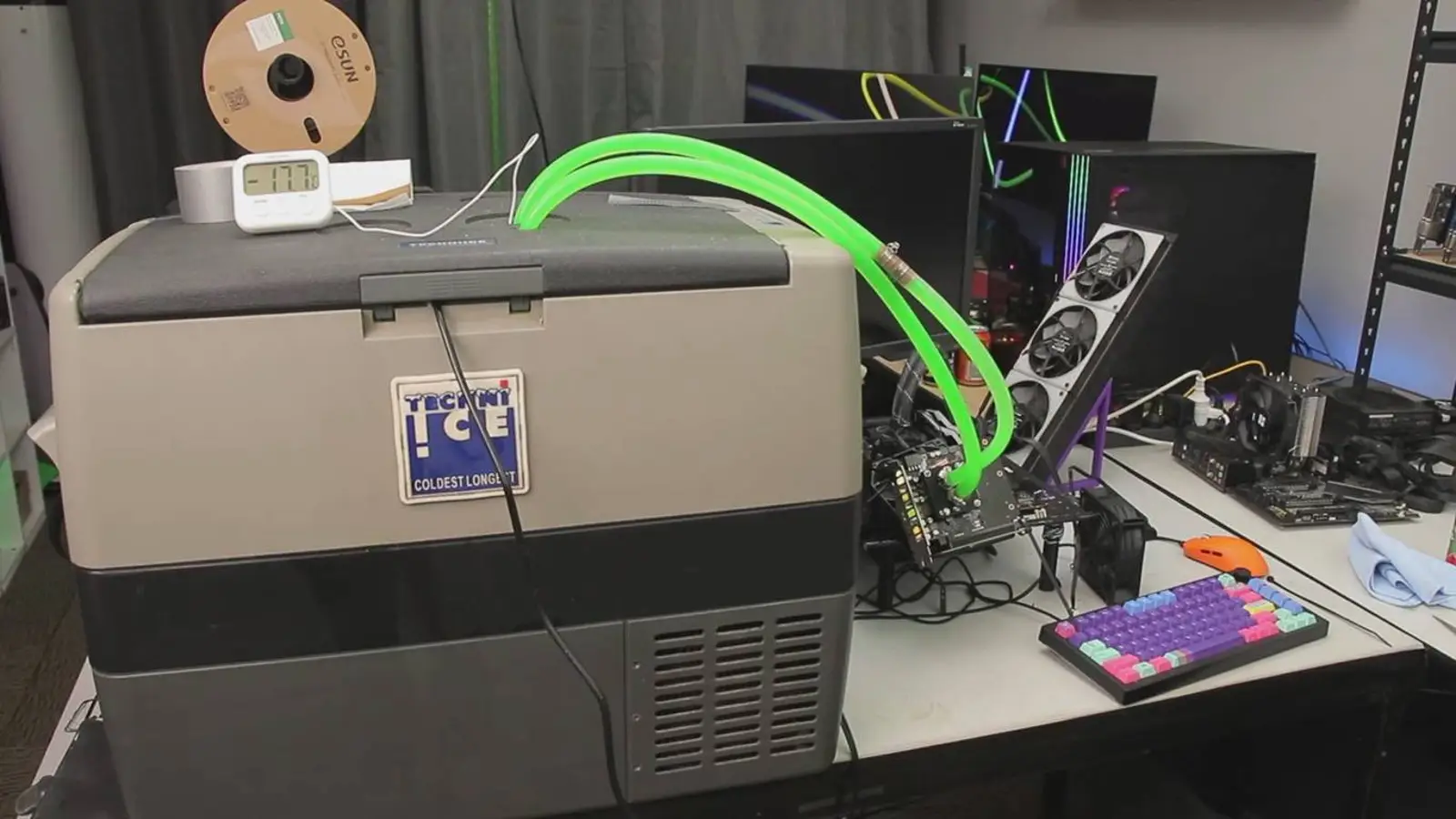Fridge-cooled, shunt-modded RTX 5050 gains 23% performance
Experimenter pushes a shunt-modded RTX 5050 to 3,468 MHz using a portable refrigerator, netting a 23% uplift and top GB207 scores in Time Spy and Port Royal.
Experimenter pushes a shunt-modded RTX 5050 to 3,468 MHz using a portable refrigerator, netting a 23% uplift and top GB207 scores in Time Spy and Port Royal.

© YouTube / TrashBench
Experimenter TrashBench once again pushed the limits of budget hardware—this time by hooking a Gigabyte RTX 5050 up to a Techni-Ice portable refrigerator and turning it into a makeshift extreme cooling setup. He shunt-modded the card to lift factory power limits and routed a glycol-based cooling loop straight into the freezer, keeping the GPU between −12°C and 15°C.
The payoff was hard to ignore. The RTX 5050’s base boost sits around 2,820 MHz, but under this unorthodox cooling the card held a steady 3,468 MHz—roughly a 23% uplift. In benchmarks, 3DMark Time Spy climbed from 10,211 to 12,058 points, Port Royal rose from 6,131 to 7,162, and Heaven added nearly 1,200 points. That push was enough to put the card first among tested GB207 GPUs.
Power readings, however, are essentially meaningless here: the shunt mod disables normal monitoring, allowing the card to draw well beyond its nominal 78 W. That very freedom is what opens the extra overclocking headroom that’s usually out of reach.
The approach might look absurd, but the experiment makes its point: even the most basic RTX 5050 has more in reserve—if you’re willing to cool it the old-fashioned way, with a refrigerator and a bit of improvisation.